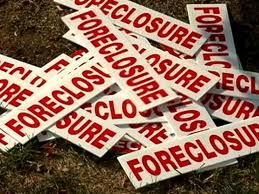Quarterly foreclosure activity increased in 2012’s first quarter for 114 of the 212 metropolitan areas followed by RealtyTrac, according to a new study by the research firm.
The study, however, was not entirely negative. Though foreclosures did increase in 26 of the U.S.’ 50 largest metro areas, with the biggest increases in Pittsburgh, Indianapolis and Philadelphia, it also decreased by wide margins in similarly large cities, such as the 28 percent decline in Portland, 26 percent decline in Las Vegas and 21 percent fall in Boston and San Jose.
And even with the quarterly increases, there were a large number of yearly decreases in the vast majority of those aforementioned areas. 135 of the 212 areas, or 64 percent, saw year-over-year declines in foreclosures for the first quarter, and of the 50 largest areas, 33 experienced decreases in activity, with Las Vegas (down 61 percent), Seattle (down 53 percent), and Austin, Texas (down 51 percent) leading the way. Of the cities with the largest annual increases, Orlando (up 52 percent), Indianapolis (up 41 percent), Hartford, Conn. (up 38 percent) and Miami (up 37 percent).
Brandon Moore, the chief executive officer of RealtyTrac, said the study’s results were a mixture of good and bad.
“First quarter metro foreclosure trends were a mixed bag,” Moore said. “While the majority of metro areas continued to show foreclosure activity down from a year ago, more than half reported increasing foreclosure activity from the previous quarter — an early sign that long-dormant foreclosures are coming out of hibernation in many local markets.”
That final comment from Moore, on the foreclosure market rising from “hibernation,” has been the source of a divide among analysts in recent months. The conventional wisdom, heading in to 2012, was that the U.S. foreclosure markets, after spending much of 2011 on hiatus as a result of the robo signing scandal’s numerous foreclosure-related mishaps, would recover in a big way, and that with the mortgage settlement a done deal, many banks would pick up where they left off in 2010 and resuming their foreclosure filings.
RealtyTrac predicted as much in a bold Foreclosure Market Report, but those predictions have not yet come to fruition, and the explanation for the slower-than-expected foreclosure activity in 2012 has come from the other side of the debate, where analysts and real estate professionals have argued that banks and lenders, after the humiliating developments of 2010, will approach their foreclosure portfolios with infinitely more care and measure, resulting in not a flood, but a trickle of foreclosures throughout the year. George Schultz, @properties’ managing broker in Bucktown, stated as much in a March report on foreclosures.
Also, there is one other interesting detail to RealtyTrac’s data that the firm did not mention – courtesy of Bill McBride of Calculated Risk, the states with the largest metro increases in foreclosure activity (Pennsylvania, Indiana, New York and North Carolina) are all judicial states, and the states with the largest decreases in foreclosure activity (Oregon, Nevada, Rhode Island, Utah, Massachusetts, and California) are all non-judicial states.
“This really is a tale of two different foreclosure methods,” he wrote. “Many of the judicial states still have a long way to go.”

